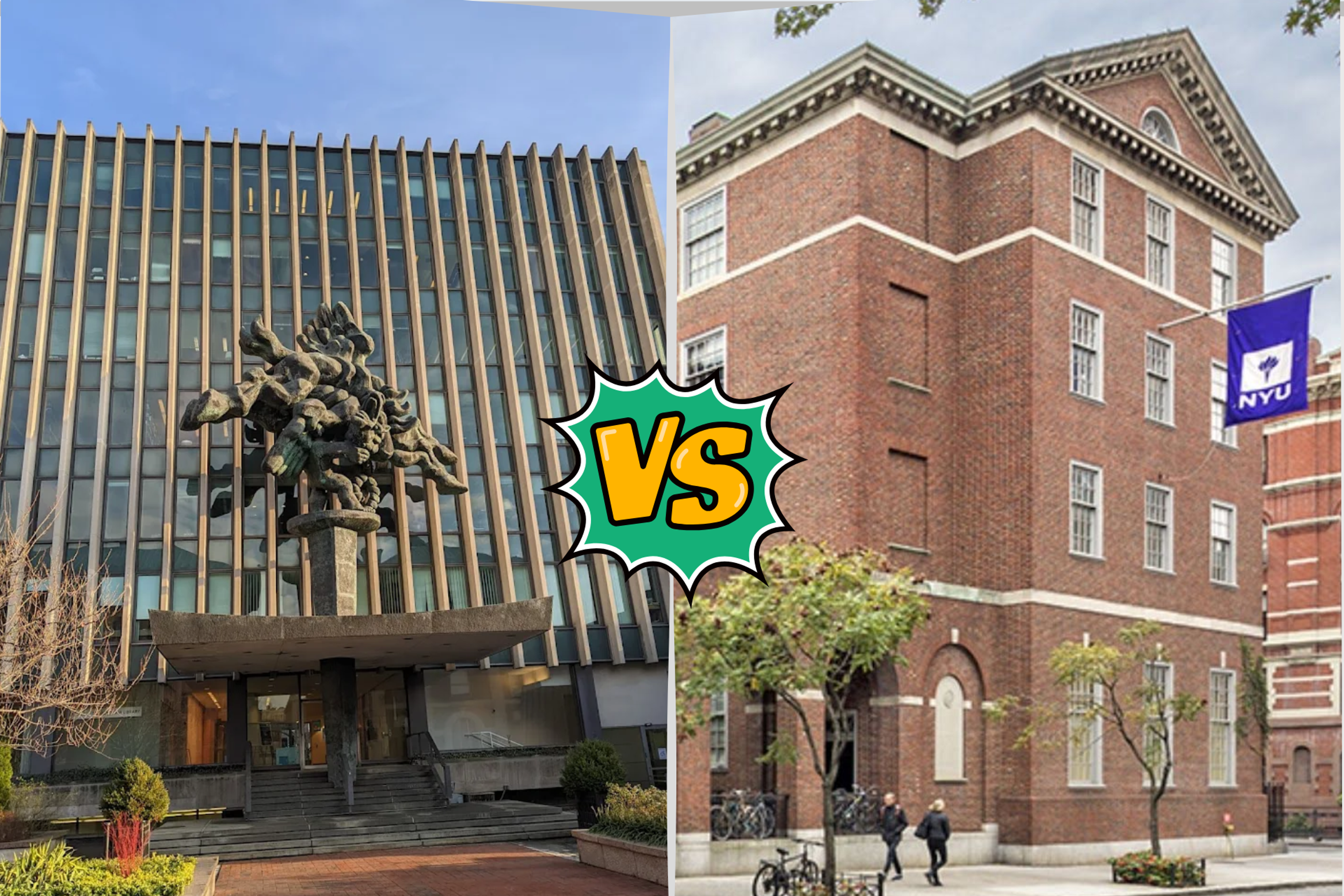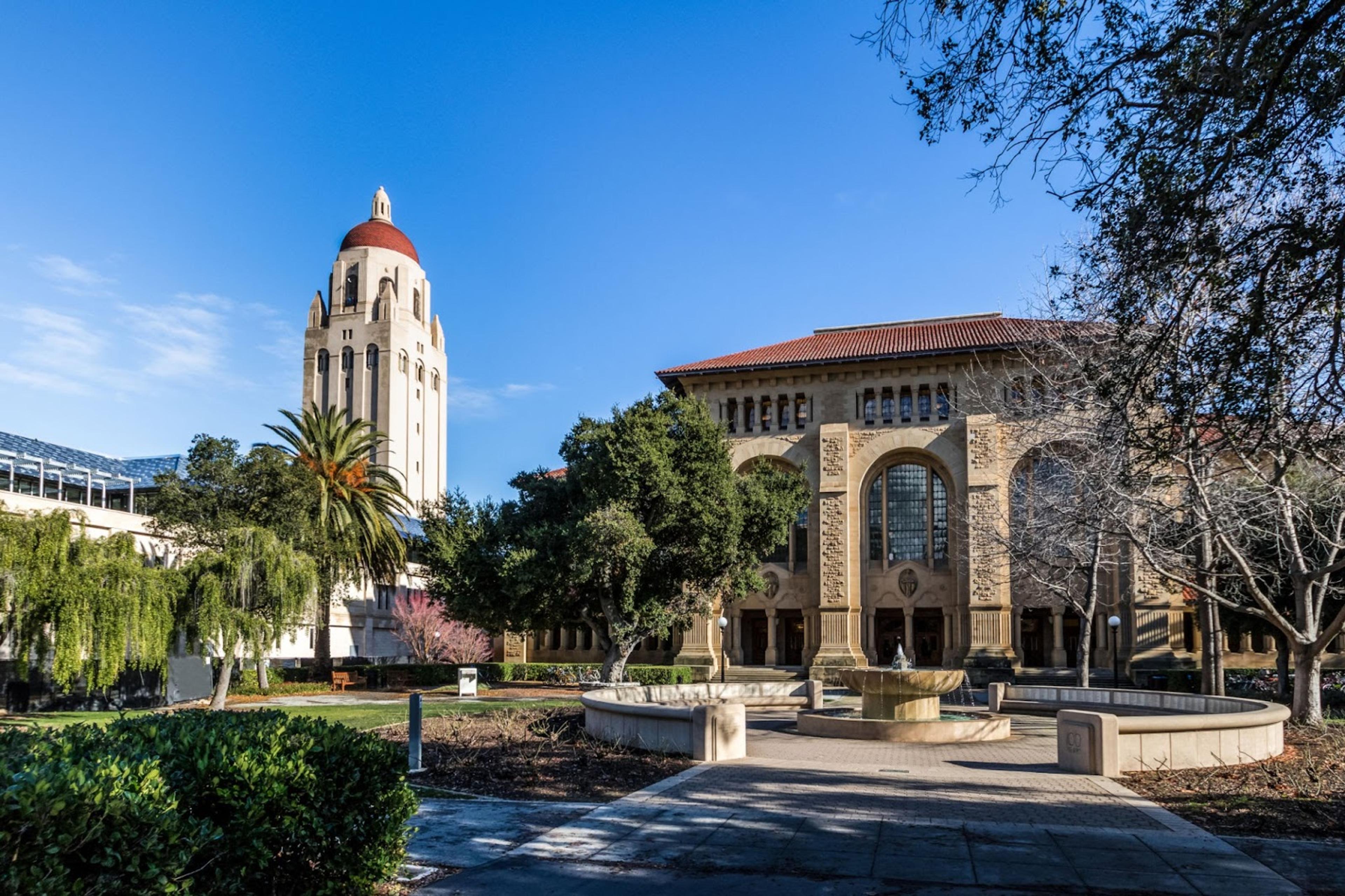Stanford Law School Vs. University of Chicago Law School: An In-Depth Comparison
If you're considering law school, you'll want to read this in-depth comparison of Stanford Law School and University of Chicago Law School.
Posted June 13, 2025

Table of Contents
Free Event

Featuring Indrani S.
How To Write Outstanding Law School Application Essays
Starting Thursday, September 11
7:00 PM UTC · 60 minutes

Featuring Indrani S.
If you are considering pursuing a law degree and you’re unsure of where to apply, this article will provide an in-depth comparison between two top-tier institutions: Stanford Law School and University of Chicago Law School. The aim of this article is to provide you with a comprehensive insight into the similarities and differences of both law schools, allowing you to make an informed decision on which school is better suited for you.
Introduction to the two law schools
Stanford Law School and The University of Chicago Law School are both highly-accomplished and well-respected institutions that have been around since the late 19th century. While they are both located in the United States, Stanford Law School is located in northern California, and the University of Chicago Law School is located in the urban Chicago area.
Despite their geographical differences, both law schools offer unique opportunities for students. Stanford Law School is known for its focus on technology and innovation in the legal field, with many of its graduates going on to work in Silicon Valley. The University of Chicago Law School, on the other hand, is known for its strong emphasis on legal theory and its rigorous academic program. Both schools have produced numerous successful lawyers, judges, and politicians, and continue to attract top-tier students from around the world.
The history of Stanford Law School
Stanford Law School was founded in 1893, and it has a long history of innovation. The university revolutionized legal education by creating the first "legal clinics" which allowed students to practice law under the supervision of practicing attorneys. Today, Stanford Law School is best known for its rigorous academic programs, its state-of-the-art research facilities, and its interdisciplinary approach to legal education.
Over the years, Stanford Law School has produced many notable alumni who have gone on to make significant contributions to the legal profession. These include former US Secretary of State and National Security Advisor, Condoleezza Rice, and former US Supreme Court Justice, Sandra Day O'Connor. The school has also been at the forefront of promoting diversity and inclusion in the legal profession, with initiatives such as the Stanford Public Interest Law Foundation and the Diversity and First-Generation Office.
In recent years, Stanford Law School has expanded its focus beyond traditional legal education to include programs that address emerging legal issues such as technology and intellectual property. The school has also established partnerships with leading law schools around the world, providing students with opportunities to study and work in different legal systems and cultures. With its commitment to innovation and excellence, Stanford Law School continues to be a leader in legal education and research.
The history of University of Chicago Law School
The University of Chicago Law School was founded in 1902 and is renowned for its theoretical and philosophical approach to legal studies. The law school was responsible for developing the "law and economics" theory, which views law as a tool to promote economic efficiency. In recent years, the law school has become known for its commitment to interdisciplinary scholarship, with faculty members active in a variety of fields, including economics, political science, philosophy, and sociology.
One of the notable features of the University of Chicago Law School is its rigorous academic program. The law school offers a wide range of courses, including courses in corporate law, intellectual property law, and international law. The curriculum is designed to provide students with a strong foundation in legal theory and practice, as well as to prepare them for the challenges of the legal profession.
Another important aspect of the University of Chicago Law School is its commitment to public service. The law school has a strong tradition of pro bono work, and many of its graduates go on to work in public interest law. The law school also offers a number of clinics and programs that provide students with opportunities to work on real-world legal issues and to make a positive impact on their communities.
Location and campus facilities
The location of Stanford Law School in northern California offers students access to Silicon Valley, where legal professionals work with some of the most innovative technology companies in the world. Stanford Law School is located on a beautifully manicured campus, with state-of-the-art amenities like computer labs, wireless technology, and an abundance of online resources like Westlaw, LexisNexis, and HeinOnline.
The University of Chicago Law School is situated in the bustling Hyde Park neighborhood of Chicago, which provides students with access to a thriving legal community. The campus has more of a traditional campus feel, with Gothic architecture that is characteristic of the university’s overall aesthetic. Students have access to top-tier facilities like the D’Angelo Law Library and the Smart Museum of Art.
Admission requirements and acceptance rates
Both law schools have very selective admission processes and require applicants to take the Law School Admission Test (LSAT). Stanford Law School has an acceptance rate of around 9%, with a median LSAT score of 171. By contrast, the University of Chicago Law School has an acceptance rate of around 20%, with a median LSAT score of 170. Prospective students should be aware that admission to either law school is extremely competitive, and both schools consider a variety of factors beyond test scores and GPA.
Faculty and staff: A comparison of expertise and experience
Both law schools have an impressive faculty roster, with some of the most well-known and respected legal scholars in the country. Stanford Law School boasts over 180 full-time faculty members, while the University of Chicago Law School has over 70 faculty members who are experts in their respective fields. However, what sets these two law schools apart is their unique approaches to legal education. Stanford Law School emphasizes a practical approach to learning, with many of their faculty members having significant legal practice experience. By contrast, the University of Chicago Law School places a greater emphasis on theoretical and philosophical approaches to legal scholarship, with many faculty members having expertise in economics, philosophy, and political science, among other fields.
Curriculum comparison: Areas of study, specializations, and electives
Both law schools offer a well-rounded curriculum that covers all areas of legal practice. However, there are some differences in the areas of specialization offered at each institution. Stanford Law School has a strong focus on technology, intellectual property, and environmental law, while the University of Chicago Law School is known for its emphasis on law and economics, international law, and regulatory law. Both schools offer students the opportunity to specialize in various areas through electives and seminars, with Stanford Law School offering a greater range of classes focused on practical, real-world legal practice.
Clinical programs: Comparison of practical experience offerings
Both law schools offer students hands-on clinical experience, where students work with real clients on real legal issues. At Stanford Law School, students work in the school's renowned legal clinics, which cover areas like civil litigation, environmental law and policy, and immigration. At the University of Chicago Law School, students can participate in one of the school's many clinical programs, including the Federal Criminal Justice Clinic, the Housing Initiative, and the Mandel Legal Aid Clinic.
Internship opportunities: Job placement statistics and alumni networks
Both law schools have strong alumni networks and track record of placing graduates in prestigious positions in the legal field. Stanford Law School has a 91% employment rate, with graduates taking positions across all sectors of the legal profession. The University of Chicago Law School graduates also have an impressive job placement rate, with 90% of students employed within ten months of graduation.
Student life comparison: Housing, extracurricular activities, and events
Both law schools offer a rich campus life outside of the classroom. Stanford Law School students can opt to live on-campus in one of the school's many apartments, townhouses, or dormitories. There are also plenty of extracurricular activities available, including over 50 student organizations and clubs. At the University of Chicago Law School, students can choose to live in one of the university's many residence halls, apartments, or townhouses, and also have access to a wide variety of extracurricular activities. The school has over 30 student organizations and clubs dedicated to a variety of interests, including law, politics, and sports.
Tuition fees and scholarships offered by both law schools
Both law schools have high tuition fees, with Stanford Law School charging around $67,000 per year and the University of Chicago Law School charging around $70,000 per year. While these fees are high, both schools offer robust financial aid packages to help students pay for their education. Scholarships, grants, and loans are available to students who meet certain criteria, and both law schools pride themselves on being accessible to all students, regardless of their financial situation.
Post-graduation outcomes: Employment prospects, salaries, and career paths
Both law schools have a track record of producing graduates who go on to work in prestigious legal positions. At Stanford Law School, graduates have a median starting salary of around $180,000 per year, with top earners often taking home over $300,000 per year. At the University of Chicago Law School, graduates have a median starting salary of around $190,000 per year, with top earners frequently earning over $250,000 per year. Both law schools have a wide range of career paths open to their graduates, including private practice, government work, and academic positions.
Notable alumni from both institutions
Both law schools have produced a long list of notable alumni who have gone on to make significant contributions in the legal field and beyond. Some of the most notable Stanford Law School alumni include Sandra Day O'Connor, the first woman to serve on the U.S. Supreme Court, and William Rehnquist, who served as Chief Justice of the Supreme Court from 1986 to 2005. Some of the most famous alumni from the University of Chicago Law School include President Barack Obama, former Supreme Court Justice Antonin Scalia, and criminal defense attorney Alan Dershowitz.
Prospective student considerations: Factors to consider when choosing between the two law schools
When deciding between Stanford Law School and the University of Chicago Law School, prospective students should consider a variety of factors, including their personal preferences, their career goals, their financial situation, and their academic interests. For students who are interested in practical, real-world legal practice, Stanford Law School may be the best choice, while students who prefer a more theoretical approach to legal scholarship might prefer the University of Chicago Law School. Students should also consider the location of the schools, the facilities available, and the extracurricular activities available on campus.
Conclusion: Final thoughts on the comparison between Stanford Law School vs University of Chicago Law School
Both Stanford Law School and the University of Chicago Law School are highly-respected institutions that have produced some of the best legal minds in the world. While there are some differences between the two schools in terms of their location, facilities, and academic focus, both schools offer students a rigorous and rewarding legal education. Ultimately, the decision between Stanford Law School and the University of Chicago Law School will depend on each individual student's preferences, goals, and priorities.











